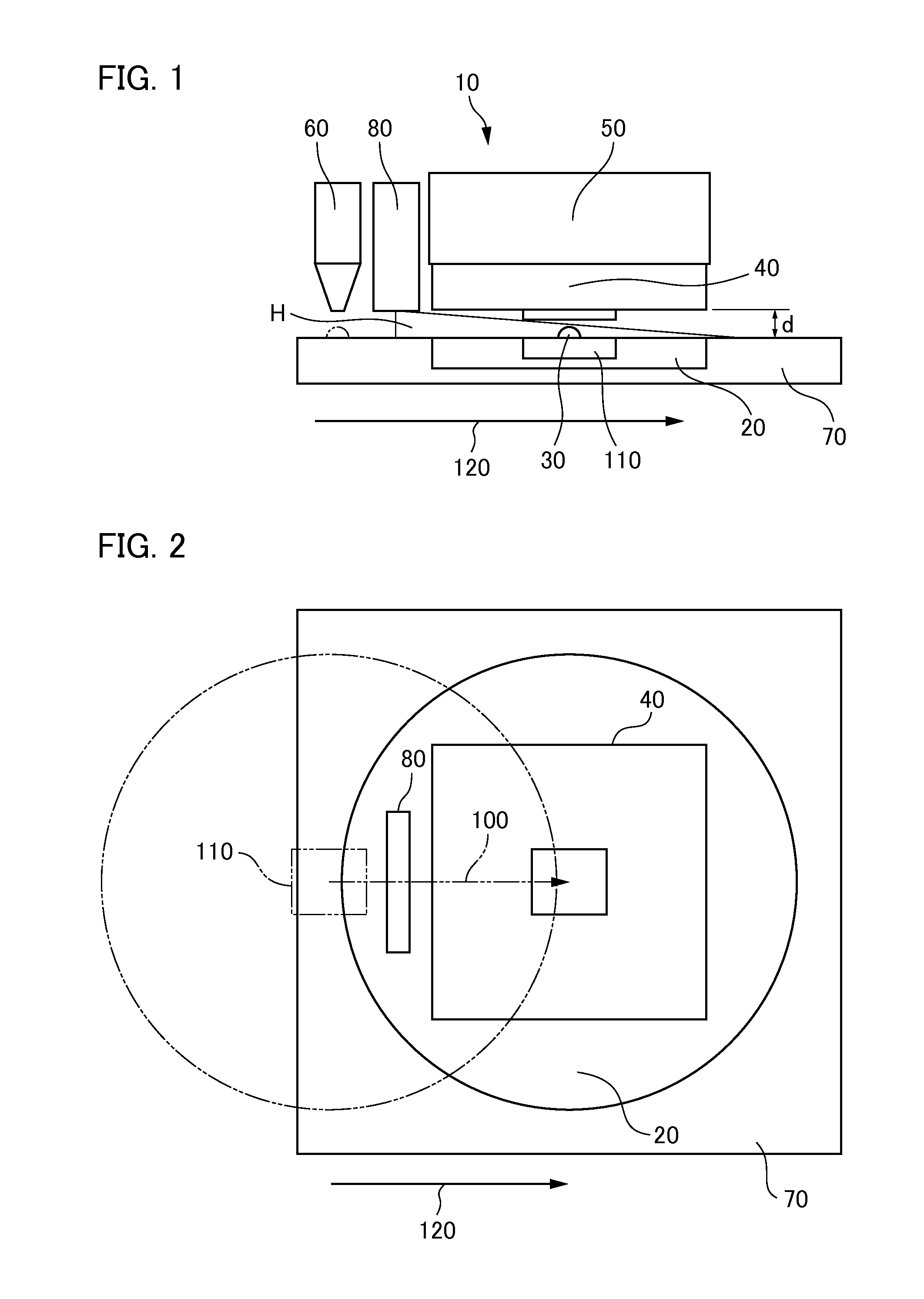Imprinting method
a technology of printing method and printing plate, which is applied in the direction of photomechanical equipment, manufacturing tools, instruments, etc., can solve the problems of pattern undesired deformation, increase in transfer time, and deterioration of dimensional accuracy, and achieve the effect of short tim
- Summary
- Abstract
- Description
- Claims
- Application Information
AI Technical Summary
Benefits of technology
Problems solved by technology
Method used
Image
Examples
first embodiment
[0028]An imprinting method of a first embodiment will be described with reference to FIG. 4. It is preferable that the gas “H” to be supplied from the gas supply nozzle 80 is supplied at a high concentration to the gap “d” between the mask 40 and the substrate 20.
[0029]As described above, the flow of the gas “H” is approximated by the Couette flow between the fixed mask 40 and the substrate stage 70. Thus, the gas “H” is caused to flow into the gap “d” immediately after the gas “H” has been supplied to the shot area 110 of the substrate 20, and the concentration of the gas “H” filled in the gap “d” becomes higher when the movement distance of the shot area 110 after passing through the shot position of the shot area 110 becomes longer. Thus, in the first embodiment, the gas supply nozzle 80 is arranged at a position as near to the mask 40 as possible.
second embodiment
[0030]An imprinting method of a second embodiment will be described with reference to FIG. 5. In the second embodiment, after the shot area 110 of the substrate 20 has passed through the shot position towards the driving direction 120, the substrate stage is made so as to return the shot area 110 back to the shot position again toward a reverse direction 130. By means of such process, the motion distance of the shot area 110 after passing through the shot position becomes longer, whereby the concentration of the gas “H” in the gap “d” may be increased.
third embodiment
[0031]An imprinting method of a third embodiment will be described with reference to FIG. 6. In the third embodiment, a description will be given of a method for the case that the size of the gas supply nozzle 80 cannot be greater than that of the shot area 110 as shown in FIG. 2. When the width of the gas supply nozzle 80 is smaller than that of the shot area 110, an area in which the gas “H” is not directly supplied may be produced. Consequently, the variation in the concentration of the gas “H” immediately after being supplied may occur, and thus, it is difficult to increase the concentration of the gas “H” in the gap “d”. Thus, in the third embodiment, after the shot area 110 of the substrate 20 has moved to the shot position, the shot area 110 is moved by changing the orientation of the shot area 110 by 90 degrees with respect to the driving direction 120. By moving the shot area 110 of the substrate 20 in this way, even when the width of the gas supply nozzle 80 cannot be grea...
PUM
| Property | Measurement | Unit |
|---|---|---|
| distance | aaaaa | aaaaa |
| area | aaaaa | aaaaa |
| flow rate | aaaaa | aaaaa |
Abstract
Description
Claims
Application Information
 Login to View More
Login to View More - R&D
- Intellectual Property
- Life Sciences
- Materials
- Tech Scout
- Unparalleled Data Quality
- Higher Quality Content
- 60% Fewer Hallucinations
Browse by: Latest US Patents, China's latest patents, Technical Efficacy Thesaurus, Application Domain, Technology Topic, Popular Technical Reports.
© 2025 PatSnap. All rights reserved.Legal|Privacy policy|Modern Slavery Act Transparency Statement|Sitemap|About US| Contact US: help@patsnap.com



